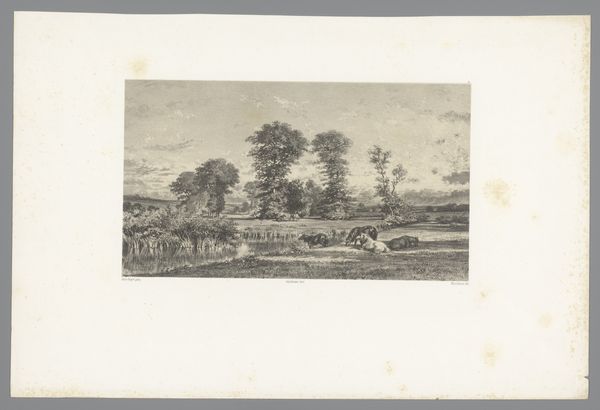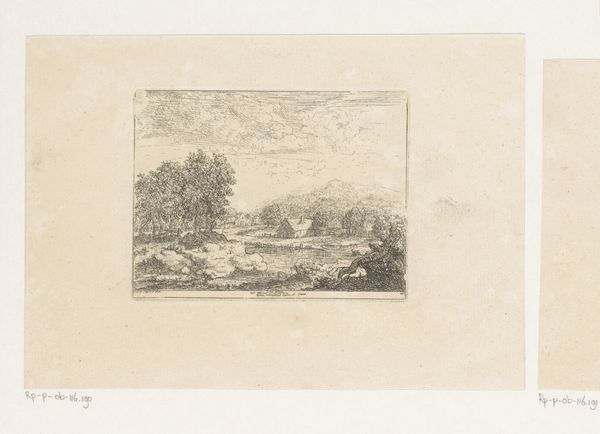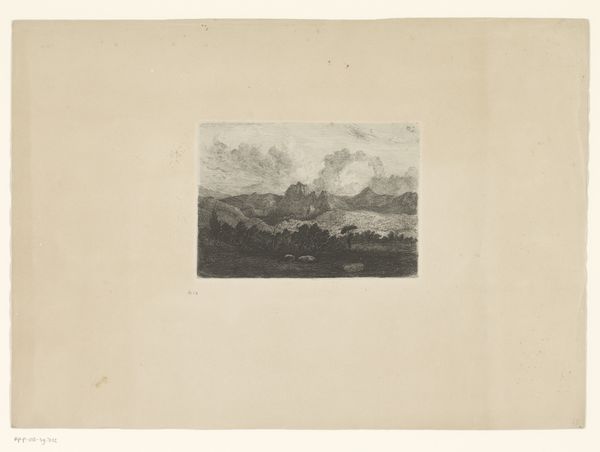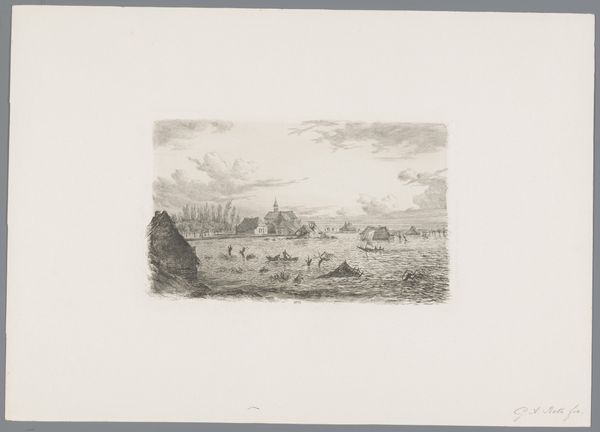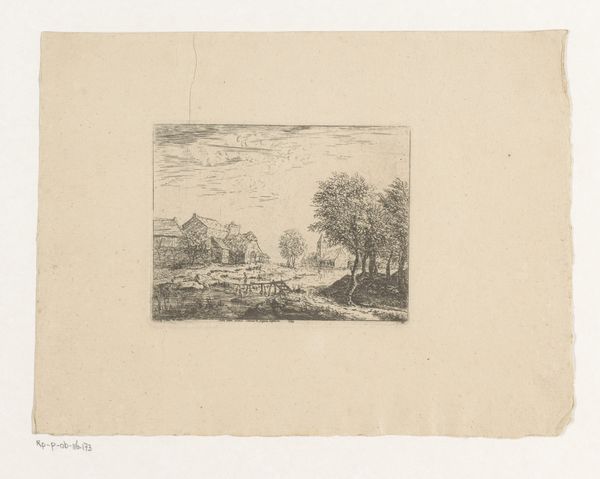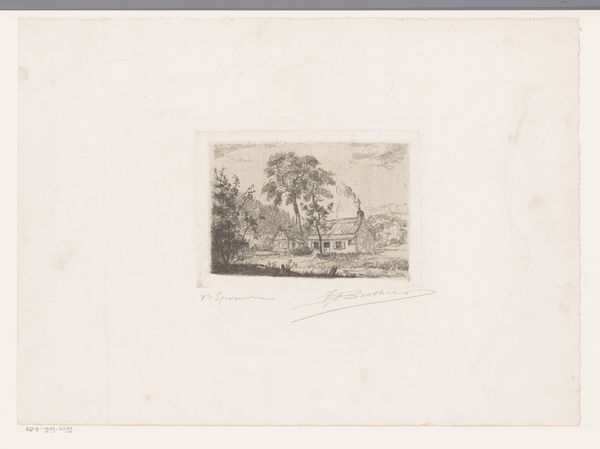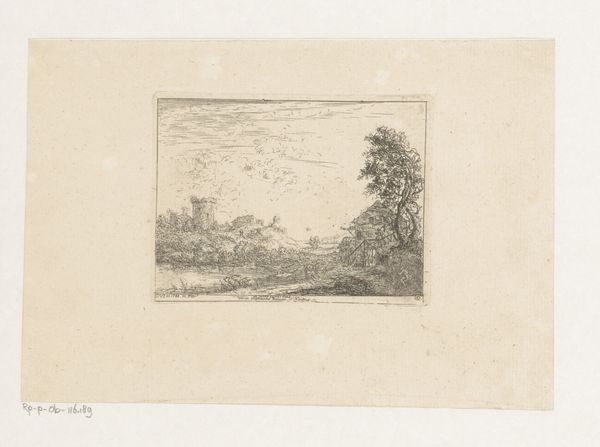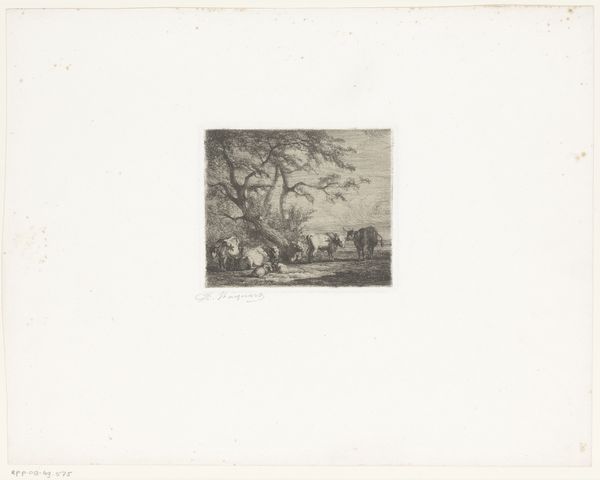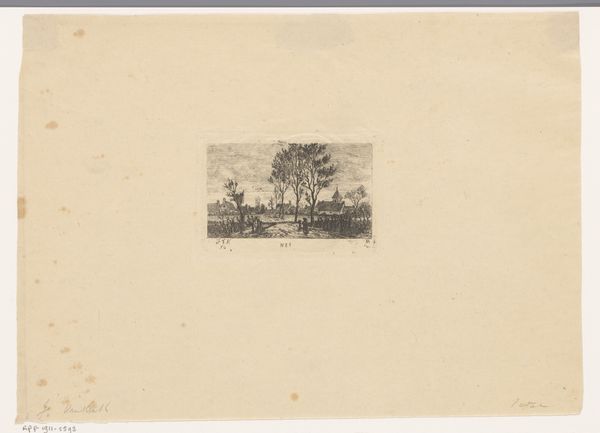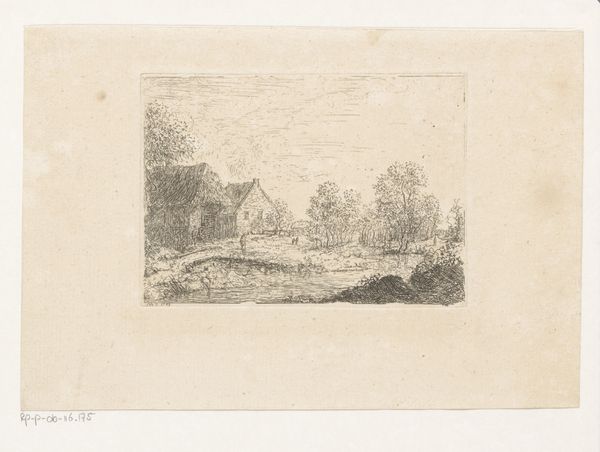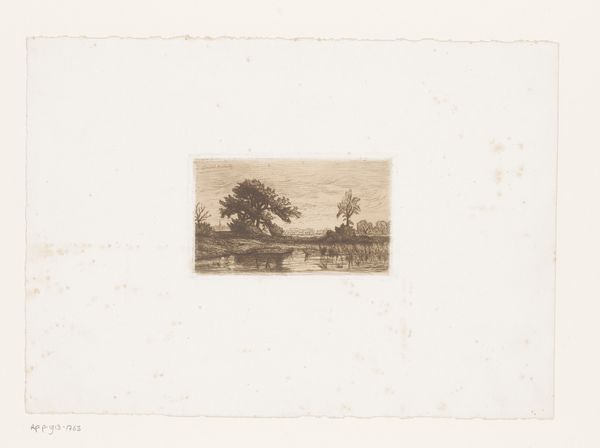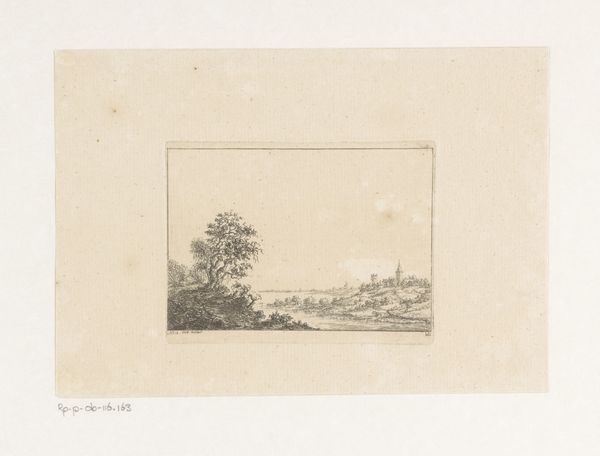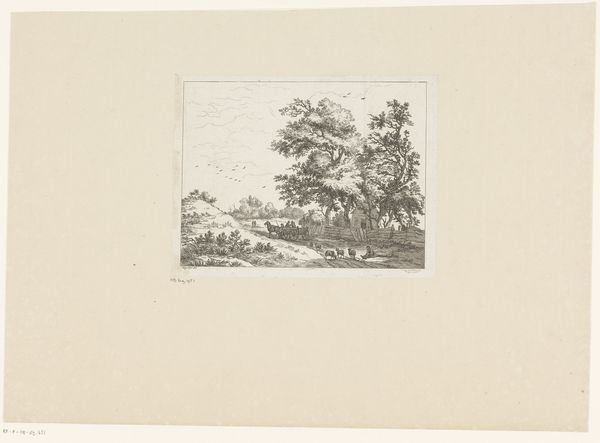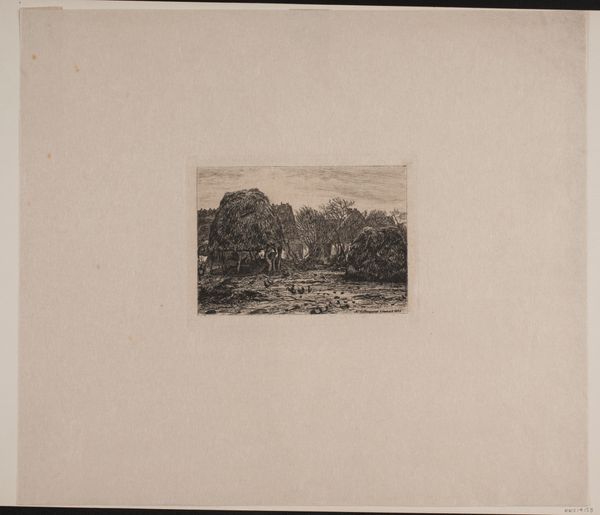
drawing, print, pencil, graphite
#
drawing
#
water colours
# print
#
landscape
#
pencil
#
graphite
#
realism
Dimensions: height 80 mm, width 121 mm
Copyright: Rijks Museum: Open Domain
Editor: So, this is *Veenlandschap met twee vogels bij Minderhout*, a landscape drawing with pencil, graphite and watercolor, possibly printed too. It's dated sometime between 1852 and 1906, by Emilie Rolin-Jacquemijns. It feels incredibly peaceful, but also a little distant, given the diminutive size. What catches your eye about its composition? Curator: Primarily, I am drawn to the relationships established through the manipulation of tonal values. Notice how the artist uses the subtle gradations of graphite and watercolor to create depth, even with such minimal detail. The composition, almost a perfect rectangle, is structured around a horizon line placed rather high. Editor: Yes, I see what you mean. It almost flattens the scene. Is that intentional? Curator: Precisely. By minimizing the perspectival recession, Rolin-Jacquemijns focuses our attention on the surface quality, the delicate texture achieved through her drawing technique. Semiotically, we might interpret the lack of strong linear perspective as a commentary on humanity’s relationship to nature, suggesting a harmonious co-existence rather than domination. The two birds, rendered almost as calligraphic marks, reinforce this reading. Consider, also, the materiality; the very lightness of the paper support is integral. Editor: That's fascinating! I was so focused on the landscape itself that I hadn't really thought about the implications of the composition's flatness. It really shifts the perspective. Curator: It invites a deeper structural understanding. Through close analysis, one uncovers how formal decisions serve an overarching symbolic and conceptual framework. How does that resonate with your initial feelings about the work? Editor: It makes me see that "peaceful" impression differently. It is not only subject, but built through form. I'll remember to look for that. Thank you! Curator: And I find myself contemplating the ways the artist is working in the tradition of landscape while experimenting with form. Always something new to be learned!
Comments
No comments
Be the first to comment and join the conversation on the ultimate creative platform.
